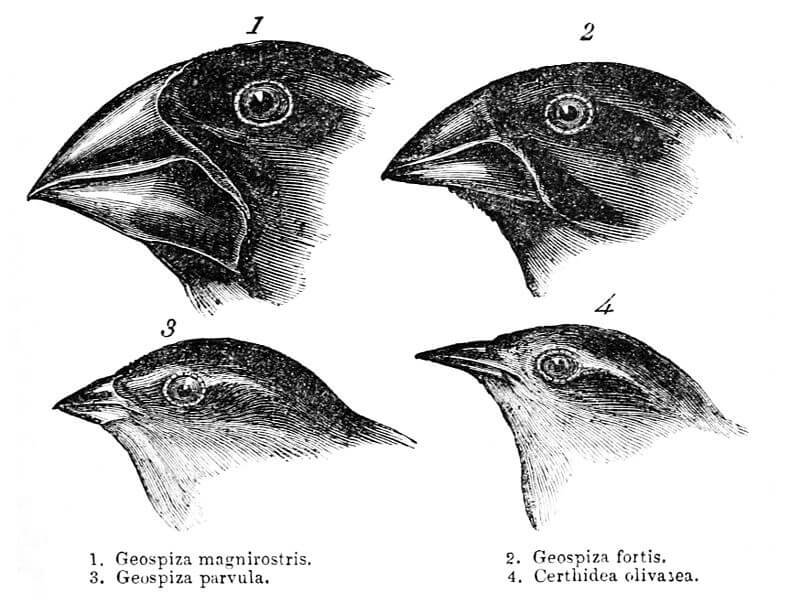
Geneticist Kat Arney tackles the myths and misconceptions around two of the most iconic images in evolutionary biology: the ‘March of Progress’ and Darwin’s finches. Where did these infamous images come from, and do they really show what everyone seems to think they do?
First published in 1965, artist Rudolph Zallinger’s March of Progress depicts a series of ancient human ancestors walking across the page, portraying the inexorable journey from monkey to man. The picture captured popular attention by telling a memorable story about our origins, and it’s still an instantly recognizable short-hand for evolutionary progress.
Since then, the March of Progress has been much-parodied in popular culture, used on everything from T-shirts to TV programs. But, as Arney discovers from Professor Chris Stringer from the Natural History Museum in London, the simplicity of the image is a misleading representation of the complex history of human evolution.
Arney also takes a closer look at ‘Darwin’s finches’, collected from the Galápagos Islands by Charles Darwin on his round-the-world voyage on the Beagle in the 1830s. Although these birds are supposedly the inspiration for his theory of natural selection, Darwin wasn’t actually all that interested in them at the time and preferred to focus on mockingbirds. So why did they become so closely tied to the great man’s name?
Full transcript, credits and show notes are available here.
Genetics Unzipped is the podcast from the UK Genetics Society, presented by award-winning science communicator and biologist Kat Arney and produced by First Create the Media. Follow Kat on Twitter @Kat_Arney, Genetics Unzipped @geneticsunzip, and the Genetics Society at @GenSocUK
Listen to Genetics Unzipped on Apple Podcasts (iTunes) Google Play, Spotify, or wherever you get your podcasts
































